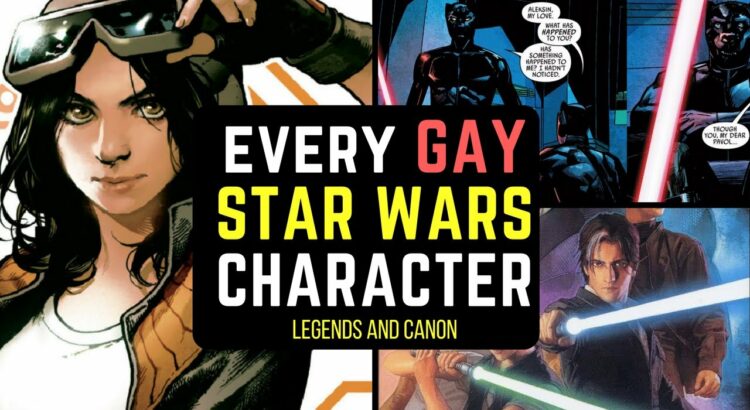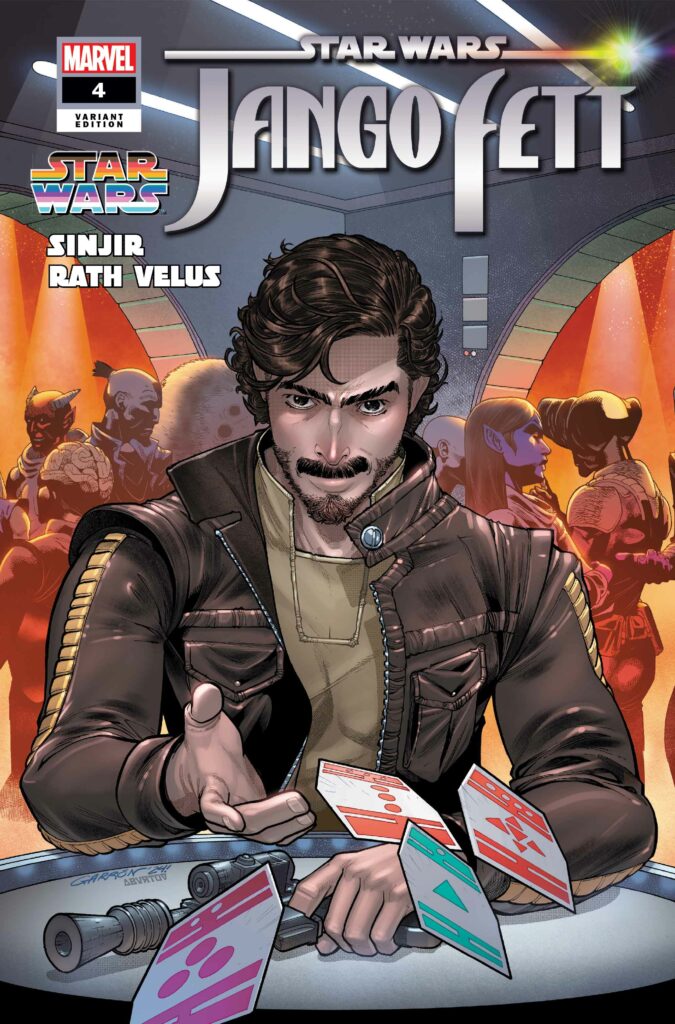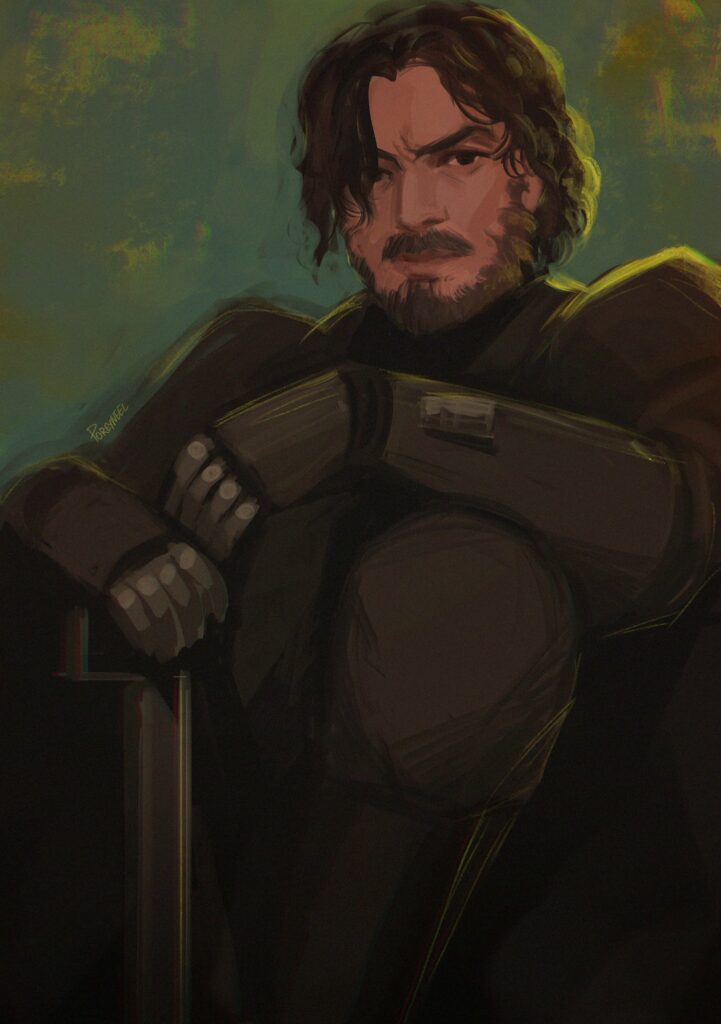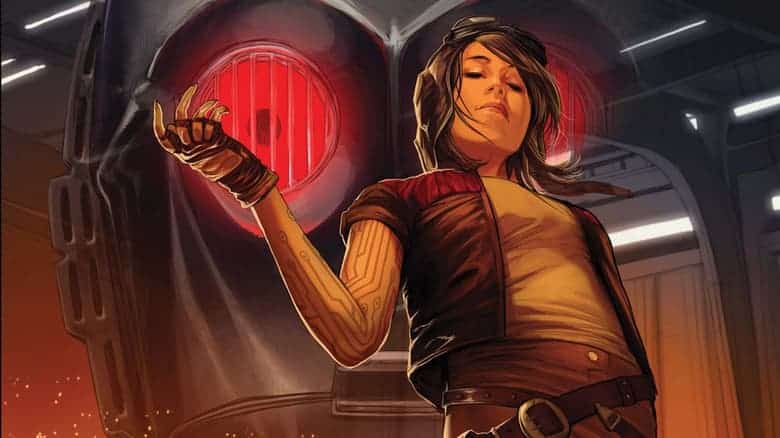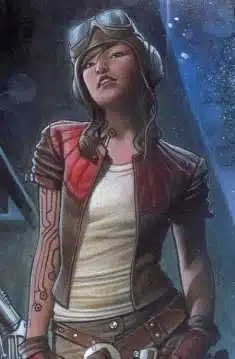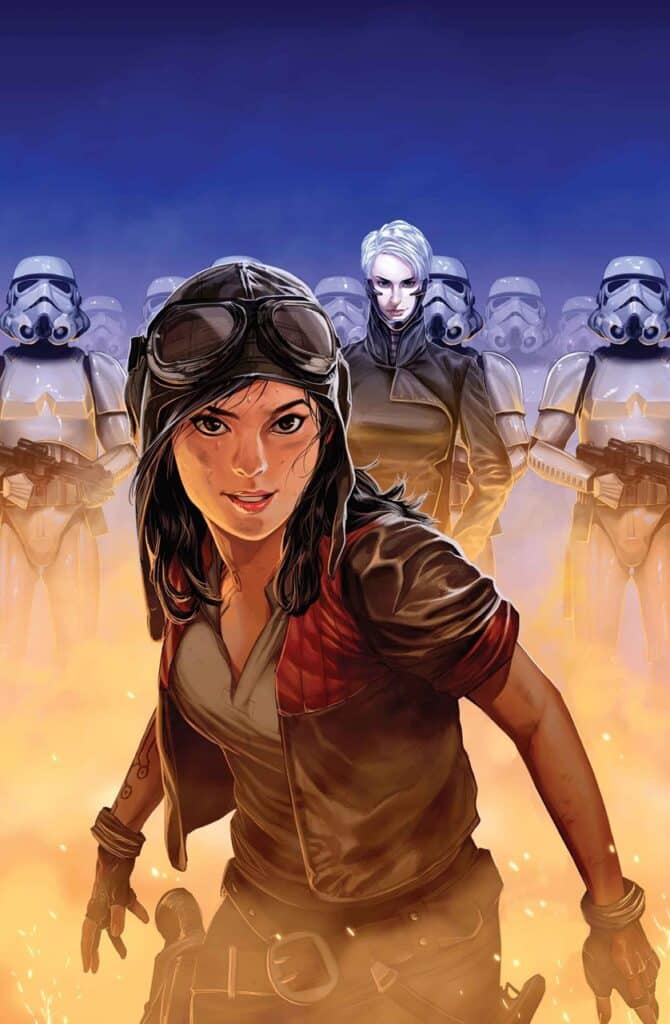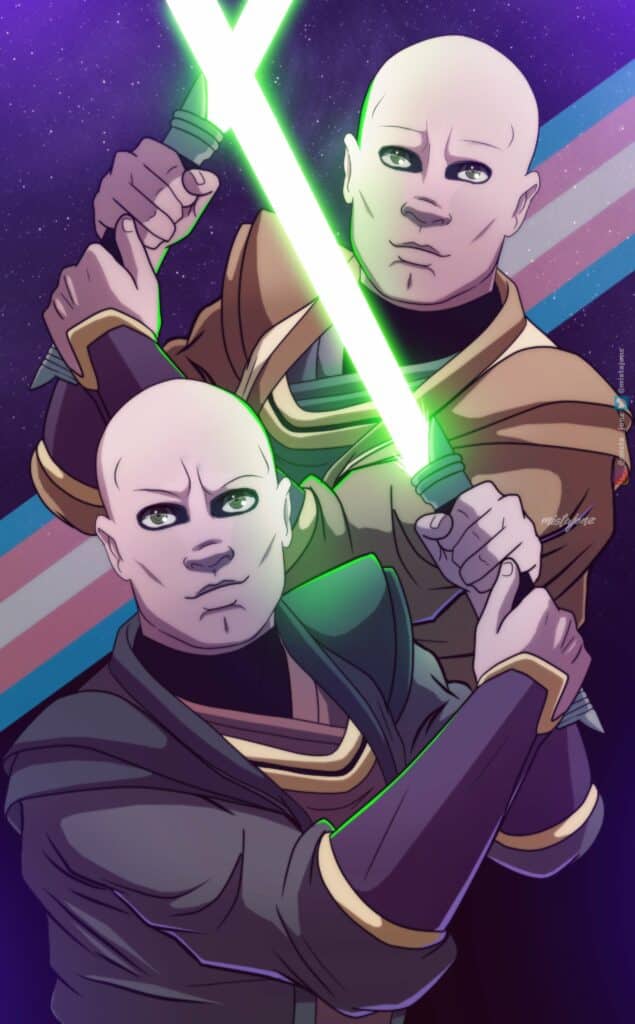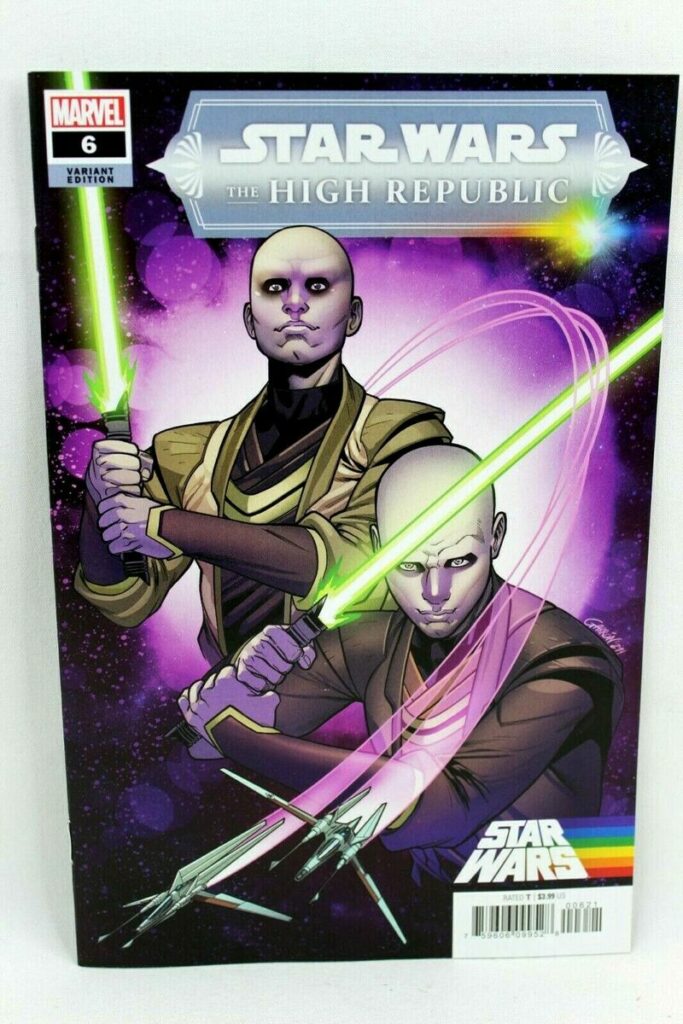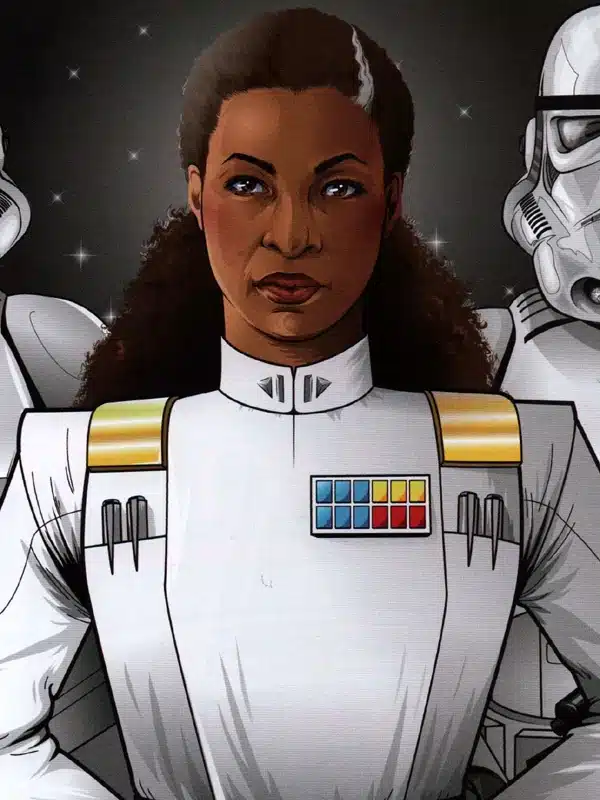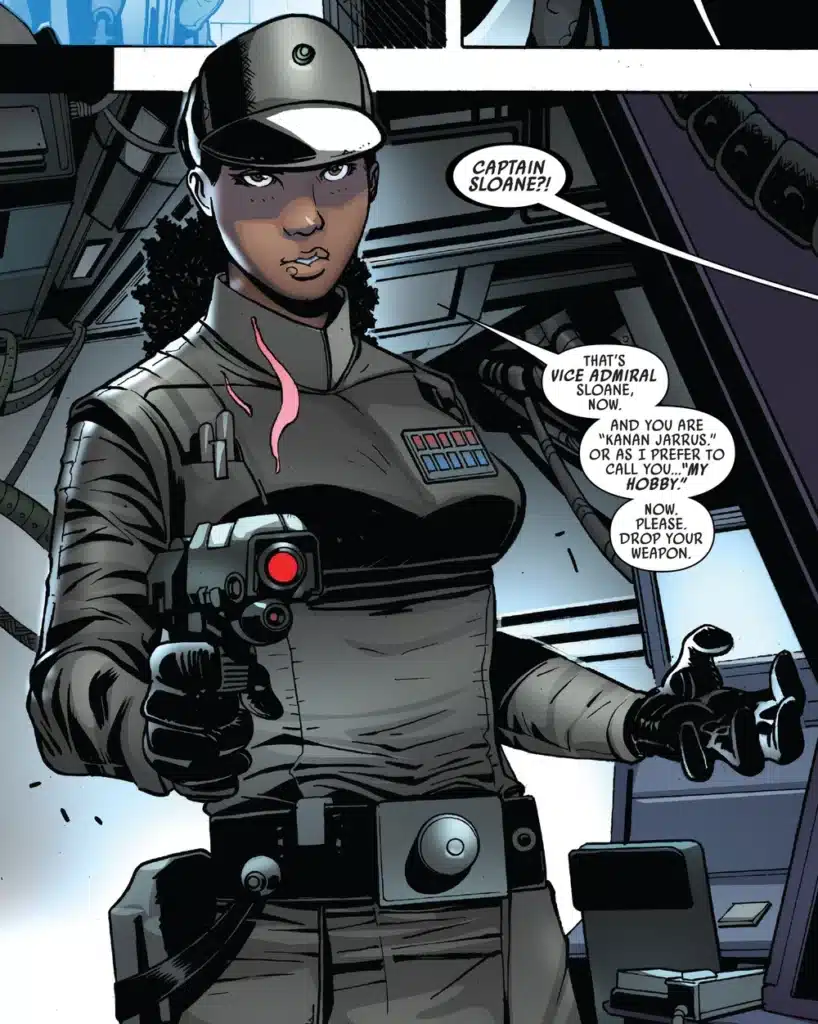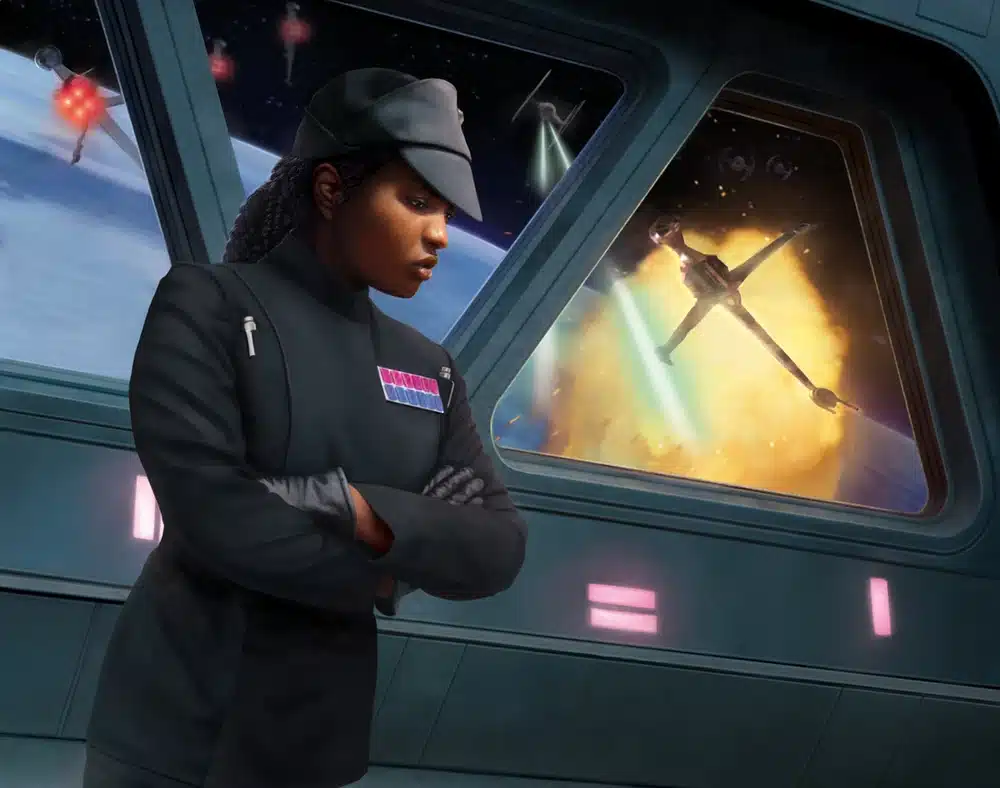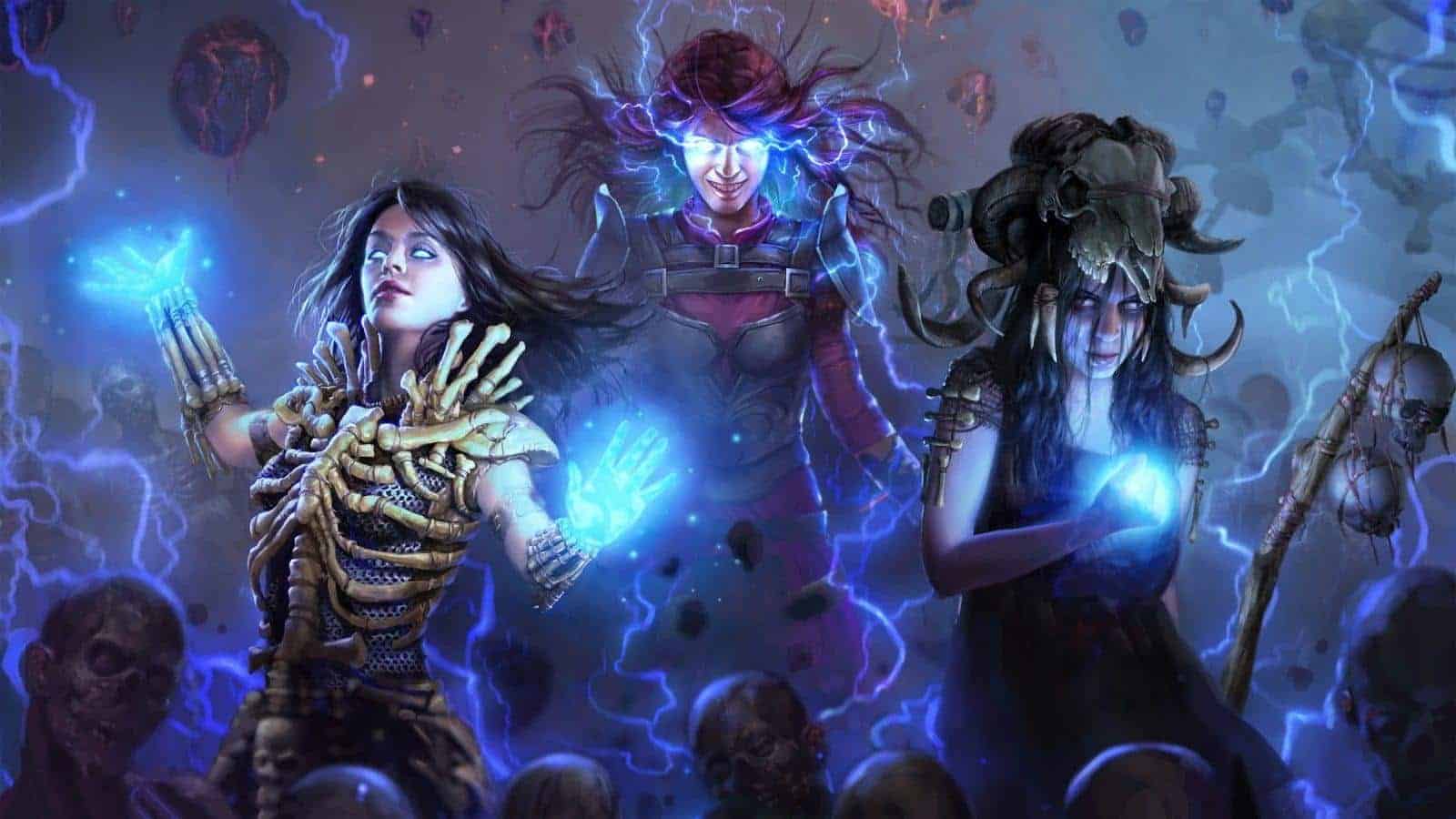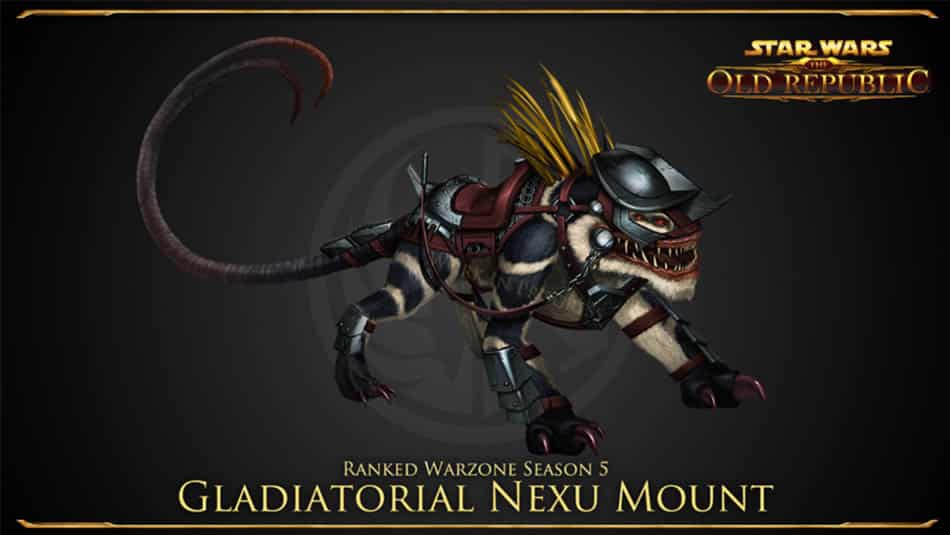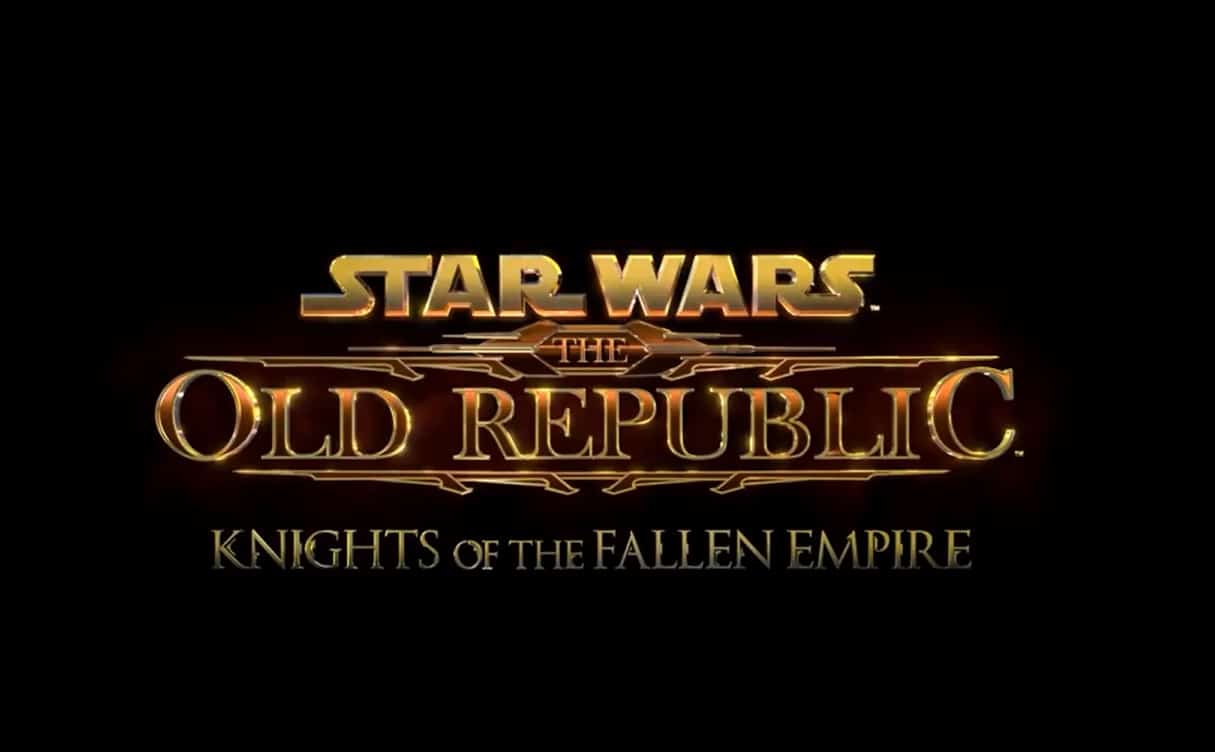Star Wars, a beloved cultural phenomenon, has been captivating fans for decades with its epic storytelling and iconic characters. As the franchise evolves, it has made significant strides in embracing diversity and representation, particularly with the introduction of queer characters. This article explores the presence of LGBTQ+ characters in the Star Wars universe, their impact on fans, and the broader implications for representation in media.
The Importance of Representation
Why Representation Matters
Representation in media is crucial for fostering inclusivity and ensuring that all audiences see themselves reflected in the stories they love. For the LGBTQ+ community, seeing queer characters in mainstream media like Star Wars provides validation, support, and a sense of belonging.
Star Wars’ Journey Towards Inclusivity
Star Wars has historically been celebrated for its diverse array of characters but has faced criticism for its slow progress in representing LGBTQ+ individuals. Recently, however, the franchise has taken meaningful steps to address this gap, contributing to a more inclusive and diverse galaxy.
Notable Queer Characters in Star Wars
Delian Mors

Delian Mors holds a significant place in the Star Wars universe as the first canonically LGBTQ+ character, introduced in Paul S. Kemp’s 2015 novel Lords of the Sith. Mors is a human female who served as a Moff—a high-ranking official within the Galactic Empire—during the tumultuous years following the Clone Wars. Her introduction marked a pivotal moment in the franchise’s journey toward greater inclusivity and representation, reflecting a broader commitment to diversity within the expansive Star Wars narrative.
Background and Role in Lords of the Sith
Delian Mors’s story is set in the period between Revenge of the Sith and the Rebels TV series, providing a fascinating glimpse into the operations of the Galactic Empire during its consolidation of power. Mors serves as the Moff of the Ryloth sector, a planet known for its strategic importance and its history of resistance against Imperial rule. Her role as an Imperial officer places her on the side often portrayed as the antagonists in the Star Wars narrative, yet Kemp’s novel provides her with a complex and humanizing portrayal.
As Moff, Mors’s responsibilities are immense, overseeing the administration and military operations within her sector. This position often places her in morally ambiguous situations, where the line between right and wrong is blurred by the overarching objectives of the Empire. Despite these challenges, Mors’s character is depicted with depth and nuance, moving beyond the simplistic good-versus-evil dichotomy that can often characterize storytelling within such a vast universe.
Personal Tragedy and Leadership
One of the most compelling aspects of Mors’s character is her personal backstory. She is depicted as a capable and efficient leader who has faced significant personal tragedy. Mors’s wife, Murra, was killed in an accident, an event that deeply affected her and added layers to her character. This loss is not just a fleeting detail but a defining part of her narrative, influencing her actions and decisions throughout the novel.
Mors is described by the outlet Big Shiny Robot as a woman who has made some serious mistakes but remains an incredibly capable leader. This duality is critical in understanding her character—she is neither wholly good nor bad but a nuanced individual navigating the complexities of her role within the Empire. Her determination to prevent failure and maintain control of her sector highlights her resilience and commitment, traits that resonate with many readers.
Her handling of personal grief while maintaining her professional responsibilities adds a rich layer of realism and relatability. It showcases how even those who serve in antagonistic roles can possess deeply human qualities and experiences, broadening the emotional landscape of the Star Wars universe.
Impact and Reception
The introduction of Delian Mors as the first LGBTQ+ character in Star Wars canon was a landmark moment that received widespread attention and praise. Her inclusion was seen as a progressive step forward for a franchise that, until then, had not visibly included LGBTQ+ characters in its official narratives. This move by Lucasfilm and author Paul S. Kemp signaled an important shift toward inclusivity and representation in mainstream media, particularly in a beloved franchise like Star Wars.
Significance of LGBTQ+ Representation
LGBTQ+ representation in media is crucial for several reasons. Firstly, it allows members of the LGBTQ+ community to see themselves reflected in the stories they love, providing validation and a sense of belonging. For many fans, seeing a character like Delian Mors in a universe as vast and influential as Star Wars can be incredibly empowering. It tells them that their identities are acknowledged and valued, even in the realms of epic space operas.
Moreover, the inclusion of LGBTQ+ characters challenges stereotypes and broadens the understanding of audiences regarding diverse sexual orientations and gender identities. Characters like Delian Mors play a pivotal role in normalizing LGBTQ+ identities and promoting acceptance and empathy. This can have far-reaching effects, particularly on younger audiences who are still forming their perceptions of the world and the people in it.
Representation also serves an educational purpose, fostering greater awareness and understanding among those who might not be familiar with LGBTQ+ issues. By integrating LGBTQ+ characters into popular media, creators can influence social attitudes and contribute to a more inclusive and accepting society.
Continuing the Legacy
Delian Mors’s introduction set a precedent for future storytelling within the Star Wars universe. Her character paved the way for more LGBTQ+ characters, encouraging writers and creators to explore diverse identities and relationships in their narratives. This commitment to diversity not only enriches the storytelling but also ensures that the Star Wars universe remains relevant and resonant with contemporary audiences.
In conclusion, Delian Mors’s character is significant not just for her role within the Star Wars narrative but also for what she represents in the broader context of media representation. Her inclusion highlights the importance of diversity and the positive impact it can have on fans and society at large. As the Star Wars universe continues to expand, characters like Delian Mors remind us of the power of storytelling to reflect and celebrate the full spectrum of human experience.
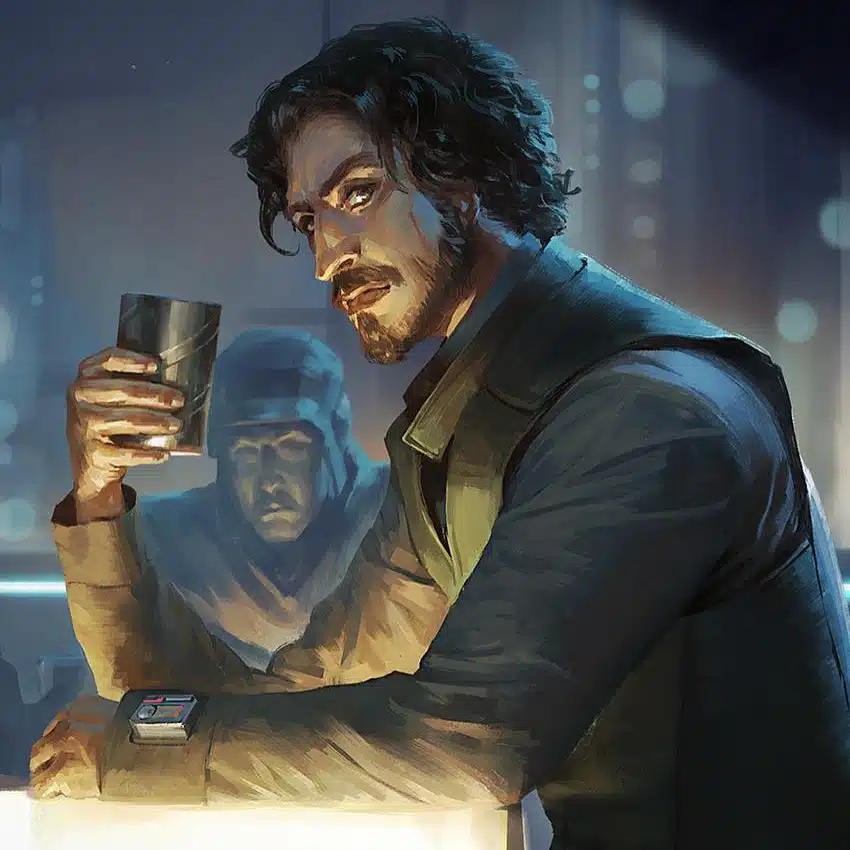
Sinjir Rath Velus
Sinjir Rath Velus stands out as a groundbreaking character in the Star Wars universe, introduced in Chuck Wendig’s Aftermath trilogy. As the first major gay hero in the Star Wars canon, Sinjir’s character not only adds depth to the post-Empire storyline but also represents a significant step forward in LGBTQ+ representation within the franchise. His journey from an Imperial officer to a Rebel hero provides a compelling narrative arc that resonates with many fans.
Introduction and Background
Sinjir Rath Velus is introduced in Star Wars: Aftermath, a novel set after the events of Return of the Jedi. This period is marked by the fall of the Galactic Empire and the struggle of the New Republic to establish order in the galaxy. Sinjir, a former loyalty officer for the Imperial Security Bureau (ISB), finds himself disillusioned with the Empire following the destruction of the second Death Star and the deaths of Emperor Palpatine and Darth Vader.
As an ISB officer, Sinjir was responsible for maintaining discipline and loyalty within the Empire, often through ruthless and morally questionable means. However, the collapse of the Empire forces him to reevaluate his beliefs and loyalties. His character arc begins with his decision to defect from the Empire, driven by a desire to atone for his past actions and find a new purpose.
A Journey of Redemption
Sinjir’s journey is one of redemption and self-discovery. After abandoning the Empire, he initially struggles with his new identity and the guilt of his previous actions. This internal conflict adds a layer of complexity to his character, making him more relatable and human. He is not portrayed as a perfect hero but as a flawed individual seeking redemption.
In Aftermath, Sinjir joins a ragtag group of Rebels led by Norra Wexley. This diverse team includes a bounty hunter, a former Imperial pilot, and a Zabrak warrior, each with their own motivations and backstories. Together, they embark on a mission to capture Imperial war criminals and support the fledgling New Republic. Throughout the trilogy, Sinjir’s skills as a former ISB officer prove invaluable, even as he grapples with his own moral compass.
Relationship with Conder Kyl
One of the most significant aspects of Sinjir’s character is his romantic relationship with Conder Kyl, a freelance slicer working for the New Republic. Their relationship is portrayed with sensitivity and depth, adding a personal dimension to Sinjir’s journey. Conder becomes a stabilizing force in Sinjir’s life, helping him navigate his past traumas and find a sense of belonging.
Their relationship develops naturally over the course of the trilogy, highlighting the themes of love, acceptance, and healing. It is notable for being one of the first prominent same-sex relationships in the Star Wars canon, providing much-needed representation for LGBTQ+ fans. Their dynamic is characterized by mutual respect and support, showcasing a positive and healthy relationship in a genre often dominated by heterosexual romances.
Sinjir’s Impact on the New Republic
Sinjir’s contributions to the New Republic are significant. His insider knowledge of the Empire’s operations and his strategic thinking play a crucial role in the group’s efforts to thwart remaining Imperial threats. Despite his checkered past, Sinjir proves to be a valuable ally, using his skills for the greater good.
His transformation from a feared Imperial officer to a trusted member of the New Republic reflects the broader theme of redemption and the possibility of change. Sinjir’s story underscores the idea that individuals are not defined solely by their past actions but by their capacity for growth and their commitment to doing better.
Significance of LGBTQ+ Representation
The introduction of Sinjir Rath Velus as a major gay character in Star Wars is a milestone for LGBTQ+ representation in popular media. His presence in the series signals a shift toward greater inclusivity and recognition of diverse identities. For LGBTQ+ fans, Sinjir’s character provides a sense of visibility and validation, reinforcing that their identities are an integral part of the Star Wars universe.
Representation matters because it helps to normalize diverse identities and fosters a more inclusive culture. By including LGBTQ+ characters like Sinjir, Star Wars not only enriches its storytelling but also reflects the diversity of its audience. This inclusivity can have a profound impact, especially on younger fans who are still exploring their own identities and seeking role models in the media they consume.
Critical Reception
Sinjir Rath Velus has been well-received by both critics and fans. His character is praised for its complexity and depth, and his inclusion is seen as a positive step forward for the franchise. Critics have lauded Chuck Wendig for creating a multi-dimensional character whose sexuality is an integral part of his identity but not his sole defining trait. This nuanced portrayal helps to avoid tokenism and ensures that Sinjir is recognized as a fully realized character within the Star Wars narrative.
Legacy and Future
Sinjir’s character has set a precedent for future storytelling within the Star Wars universe. His presence demonstrates that LGBTQ+ characters can occupy central roles in major franchises, contributing meaningfully to the plot and enriching the overall narrative. As Star Wars continues to expand with new films, TV series, and novels, the foundation laid by characters like Sinjir provides opportunities for even greater diversity and representation.
In conclusion, Sinjir Rath Velus’s character is significant not only for his role in the Aftermath trilogy but also for his impact on LGBTQ+ representation in mainstream media. His journey of redemption, his relationship with Conder Kyl, and his contributions to the New Republic make him a standout character in the Star Wars canon. As the franchise continues to evolve, the inclusion of characters like Sinjir ensures that Star Wars remains a progressive and inclusive galaxy where all fans can see themselves reflected.
Doctor Chelli Aphra
Doctor Chelli Lona Aphra is a standout character in the Star Wars universe, introduced in the Darth Vader comic series by Marvel Comics. Created by writer Kieron Gillen and artist Salvador Larroca, Aphra quickly became a fan favorite due to her complex personality, morally ambiguous nature, and rich storylines. As an openly queer character, Aphra has also been a significant figure for LGBTQ+ representation within the Star Wars franchise.
Background and Introduction
Doctor Aphra is a rogue archaeologist with a penchant for danger and a questionable moral compass. Her character is often described as a “morally gray” anti-hero, drawing comparisons to the likes of Indiana Jones and Han Solo, but with a distinctly darker and more self-serving twist. Aphra’s expertise in ancient artifacts and technology makes her a valuable, albeit unpredictable, ally and a formidable foe.
Aphra’s story begins in the Darth Vader comic series, where she is recruited by Darth Vader himself to assist in his quest for power following the destruction of the first Death Star. Her knowledge of ancient technologies and her willingness to undertake risky missions make her an asset to the Sith Lord. However, her relationship with Vader is fraught with danger, and her survival often hinges on her quick wit and resourcefulness.
Relationships and Queer Representation
One of the most groundbreaking aspects of Aphra’s character is her open queerness. Her romantic relationships are portrayed with depth and authenticity, contributing significantly to LGBTQ+ representation in Star Wars. Aphra’s most notable relationship is with Magna Tolvan, an Imperial officer. Their romance is complex and multifaceted, marked by both passion and conflict.
Aphra and Tolvan’s relationship reaches a pivotal moment in Doctor Aphra #16, where they share a passionate kiss in what they believe to be their final moments. This kiss is particularly significant as it was the first visible LGBTQ+ kiss in the Disney Star Wars canon. The two survive the encounter, but their romance is complicated by Aphra’s need to protect Tolvan from the wrath of Darth Vader, leading her to alter Tolvan’s memories—a decision that adds further complexity to their relationship.
In addition to Tolvan, Aphra has had relationships with other characters, such as her old girlfriend from college, Doctor Eustacia Okka, and Sana Starros, a character who has her own storied history in the Star Wars universe. These relationships are not merely background details but integral parts of Aphra’s character development, showcasing the diversity of her romantic and personal life.
Adventures and Exploits
Aphra’s adventures are as thrilling as they are dangerous. Her quests often involve uncovering ancient artifacts, navigating treacherous environments, and outsmarting both allies and enemies. Her storylines are filled with action, suspense, and unexpected twists, making her one of the most dynamic characters in the Star Wars expanded universe.
Aphra’s exploits take her to the farthest reaches of the galaxy, from ancient ruins to Imperial strongholds. Her ability to navigate these perilous situations is a testament to her intelligence, adaptability, and survival instincts. Whether she is bargaining with crime lords, escaping deadly traps, or deciphering cryptic codes, Aphra’s adventures are always edge-of-the-seat experiences.
Impact and Legacy
Doctor Aphra’s character has had a profound impact on the Star Wars universe and its fans. Her introduction marked a significant step forward in LGBTQ+ representation, providing visibility and validation for queer fans of the franchise. Aphra’s stories have resonated with a diverse audience, drawing praise for their complexity and inclusiveness.
In 2020, Aphra’s comic book series received a GLAAD Award for Outstanding Comic Book, recognizing its contribution to LGBTQ+ representation in media. This accolade highlights the importance of her character and the positive impact she has had on both the Star Wars community and the broader landscape of popular culture.
Future Prospects
Given Aphra’s popularity, there has been considerable speculation about her potential appearances in other Star Wars media, including live-action series and animated shows. Fans have expressed a strong desire to see Aphra’s character brought to life on screen, which would further expand her influence and reach within the franchise.
Lucasfilm’s commitment to diversity and inclusion suggests that Aphra’s story is far from over. As the Star Wars universe continues to grow, there is ample opportunity to explore new dimensions of her character and introduce her to an even wider audience.
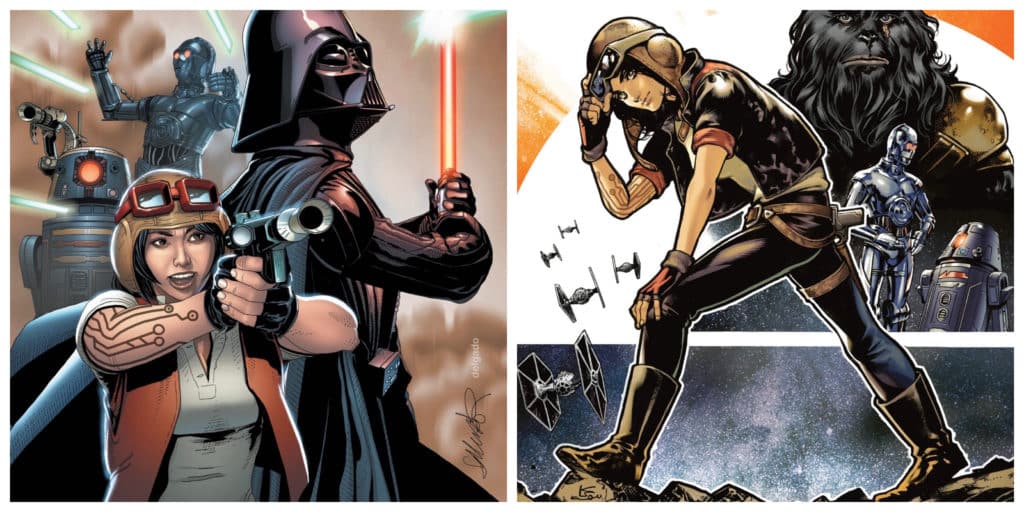
Significance of LGBTQ+ Representation
The inclusion of Doctor Aphra as a prominent queer character in Star Wars is a milestone for representation in mainstream media. Her character challenges traditional narratives and provides a nuanced portrayal of queerness that goes beyond tokenism. By embedding her sexuality naturally within her storylines, the creators have ensured that Aphra’s identity is an integral part of who she is, rather than a superficial characteristic.
For LGBTQ+ fans, seeing a character like Aphra in the Star Wars universe is immensely validating. It affirms that their identities are recognized and celebrated within one of the most influential and beloved franchises in the world. This representation can inspire and empower fans, fostering a sense of belonging and acceptance.
Doctor Chelli Aphra is a trailblazing character in the Star Wars universe, embodying the franchise’s evolving commitment to diversity and inclusion. Her complex personality, thrilling adventures, and significant relationships make her one of the most compelling characters in the expanded Star Wars lore. As a queer character, Aphra has broken new ground in representation, providing visibility and validation for LGBTQ+ fans. Her impact on the Star Wars universe is profound, and her legacy continues to grow as new stories and opportunities for her character unfold.
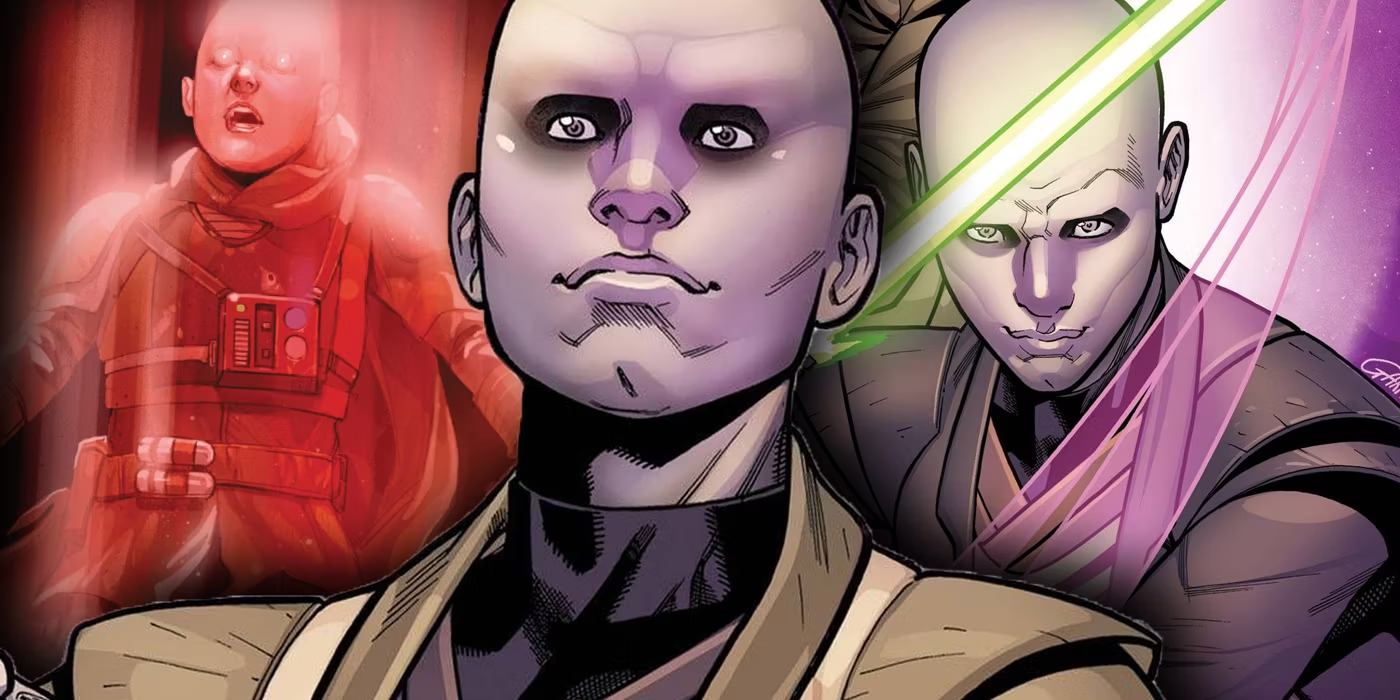
Terec and Ceret
Terec and Ceret are two groundbreaking characters in the Star Wars universe, introduced in the Star Wars: The High Republic comic series. These characters are notable not only for their roles as Jedi but also for being the first trans non-binary characters in the Star Wars canon. Their inclusion marks a significant step forward in the franchise’s commitment to diversity and representation.
Background and Introduction
Terec and Ceret are bond-twins, a unique concept within the Star Wars lore, introduced in The High Republic series, which takes place approximately 200 years before the events of The Phantom Menace. This era, known as the High Republic, is depicted as a golden age for the Jedi, characterized by peace, prosperity, and exploration. The series explores the height of Jedi influence and the challenges they face as they strive to maintain peace across the galaxy.
The High Republic initiative, encompassing novels, comics, and other media, aims to expand the Star Wars universe by exploring new characters and stories. Terec and Ceret are part of this ambitious project, which seeks to diversify the range of experiences and identities represented in Star Wars.
Unique Abilities and Bond
Terec and Ceret are bond-twins, which means they share a unique and profound connection that allows them to communicate telepathically and sense each other’s emotions and physical states. This bond is so strong that it effectively makes them one entity split between two bodies. This connection enhances their abilities as Jedi, allowing them to coordinate seamlessly in combat and other situations.
Their bond-twin nature also serves as a powerful narrative device, emphasizing themes of unity, empathy, and interconnectedness. It challenges traditional notions of individuality, suggesting that strength can come from deep, intrinsic connections with others. This concept adds a rich layer to the Star Wars mythos, expanding the understanding of relationships and identities within the galaxy.
Role in The High Republic Series
Terec and Ceret first appear in issue two of Star Wars: The High Republic, where they quickly establish themselves as skilled and dedicated Jedi Knights. Their primary mission involves investigating threats to the Republic and dealing with the emerging menace of the Nihil, a group of marauders threatening the peace of the galaxy.
Throughout the series, Terec and Ceret work alongside other prominent Jedi characters, including Avar Kriss, Keeve Trennis, and Sskeer. Their presence is integral to the Jedi’s efforts to maintain order and protect the Republic from the growing chaos. The series highlights their bravery, wisdom, and the unique advantages their bond provides in navigating complex situations.
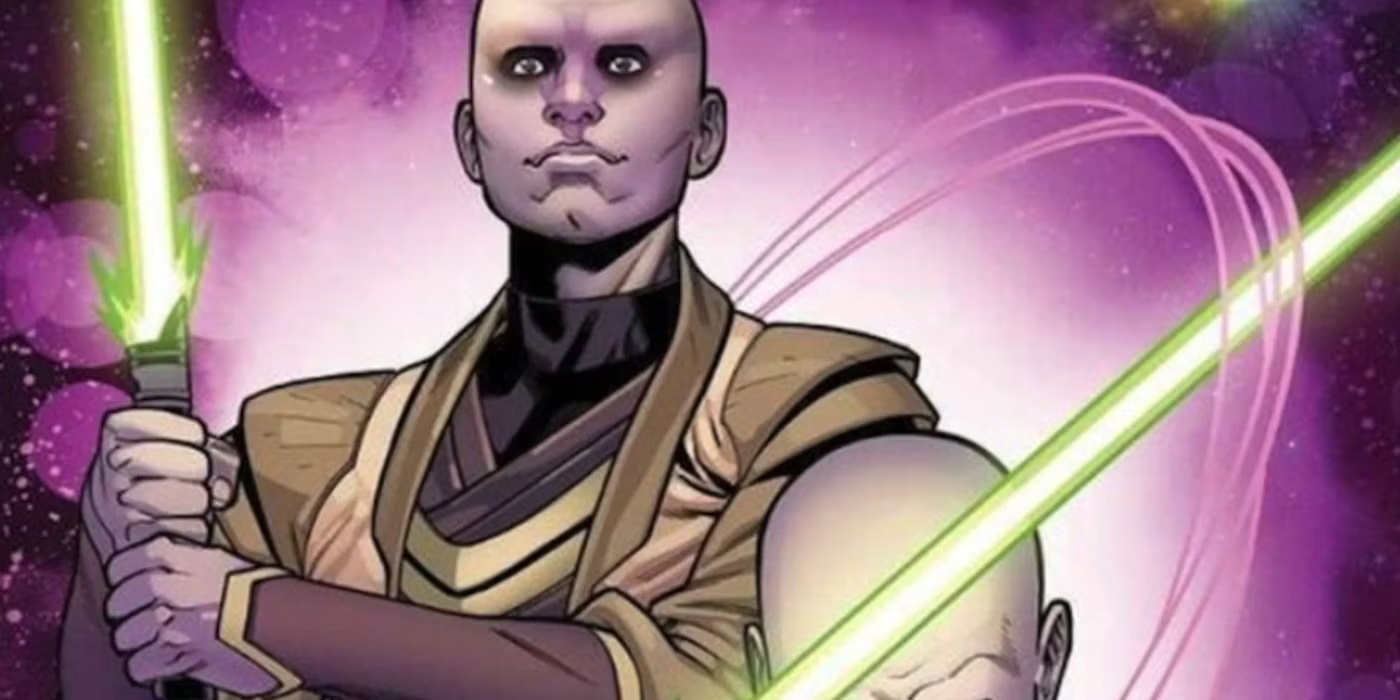
Representation and Impact
The inclusion of Terec and Ceret as trans non-binary characters is a landmark moment for Star Wars. On Trans Day of Visibility in 2021, the official Star Wars Instagram account celebrated their characters, acknowledging their identities and expressing support for trans lives. This public recognition is a testament to Lucasfilm’s commitment to broadening representation and ensuring that diverse identities are visible and respected within the Star Wars universe.
Their representation is significant for several reasons. Firstly, it provides visibility for trans and non-binary individuals, allowing fans who identify similarly to see themselves reflected in the Star Wars narrative. This visibility can be incredibly empowering, fostering a sense of belonging and validation for those who might have felt excluded from mainstream media.
Secondly, Terec and Ceret’s inclusion challenges traditional gender norms and expands the understanding of gender within the Star Wars universe. By presenting characters whose identities are fluid and non-binary, Star Wars encourages audiences to embrace diversity and question rigid gender binaries. This progressive portrayal contributes to a more inclusive cultural landscape, promoting acceptance and understanding.
Fan Reactions and Cultural Impact
The introduction of Terec and Ceret has been met with enthusiasm and appreciation from fans and the broader LGBTQ+ community. Many have praised Lucasfilm for taking meaningful steps toward inclusivity and for creating characters that reflect a wider range of human experiences. Social media platforms have been abuzz with positive reactions, with fans expressing their excitement and gratitude for the representation.
Fan art, discussions, and fan fiction featuring Terec and Ceret have flourished, demonstrating the characters’ impact and resonance within the community. These creative expressions not only celebrate the characters but also contribute to the ongoing dialogue about diversity and representation in media.
However, as with any significant cultural shift, there has been some resistance and criticism from certain quarters. Some fans have voiced concerns about the portrayal of non-binary characters, questioning whether the franchise is pandering to social trends. Despite this, the overall response has been overwhelmingly positive, highlighting a growing acceptance and desire for diverse representation in Star Wars.
Influence on Future Star Wars Content
Terec and Ceret’s successful introduction paves the way for more diverse characters in future Star Wars projects. Their presence sets a precedent for the inclusion of LGBTQ+ characters, encouraging writers and creators to explore a broader spectrum of identities and experiences. This shift towards inclusivity not only enriches the storytelling but also ensures that Star Wars remains relevant and relatable to a diverse audience.
Lucasfilm’s commitment to diversity is likely to influence the development of upcoming films, series, and other media within the Star Wars franchise. By continuing to prioritize representation, Lucasfilm can build on the legacy of characters like Terec and Ceret, creating a richer and more inclusive universe.
Significance of Bond-Twins in Star Wars Lore
The concept of bond-twins, as embodied by Terec and Ceret, adds a unique dimension to Star Wars lore. This connection goes beyond the typical master-apprentice or sibling relationships seen in the series, offering a profound exploration of unity and shared consciousness. It challenges traditional narratives of individuality and highlights the strength that comes from deep, intrinsic connections.
In practical terms, the bond between Terec and Ceret enhances their effectiveness as Jedi, allowing them to anticipate each other’s moves and respond in perfect harmony. This ability is particularly useful in combat situations, where split-second decisions can mean the difference between life and death. Their bond also provides emotional support, helping them navigate the psychological challenges of being Jedi in a tumultuous galaxy.
The inclusion of bond-twins expands the possibilities for character relationships in Star Wars, suggesting new ways in which characters can interact and support each other. It also opens the door to exploring other unique forms of connection and identity, further enriching the Star Wars narrative.
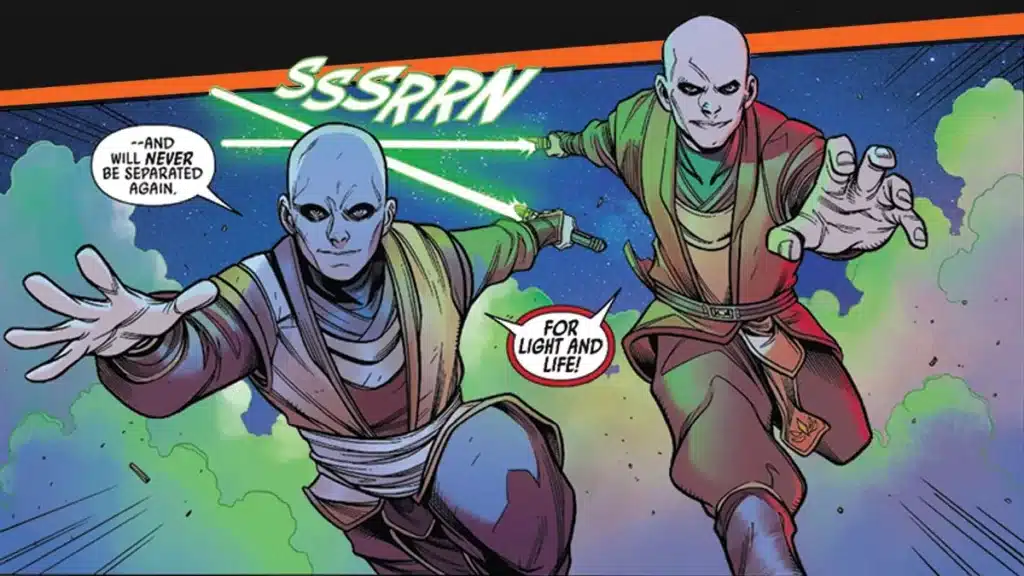
Challenges and Triumphs
Terec and Ceret’s journey is not without its challenges. As Jedi, they face numerous threats from the Nihil and other dark forces. Their bond, while a source of strength, also makes them vulnerable to attacks that can affect both twins simultaneously. Navigating these dangers requires not only skill and bravery but also a deep understanding of their unique connection.
Their storylines often involve complex moral dilemmas, reflecting the broader themes of The High Republic series. These challenges test their resolve and push them to grow as individuals and as a unit. Through their trials, Terec and Ceret exemplify the resilience and adaptability that are hallmarks of the Jedi Order.
Their triumphs, whether in battle or in personal growth, serve as inspiring examples for readers and viewers. They demonstrate that strength comes in many forms and that true power lies in understanding and embracing one’s identity.
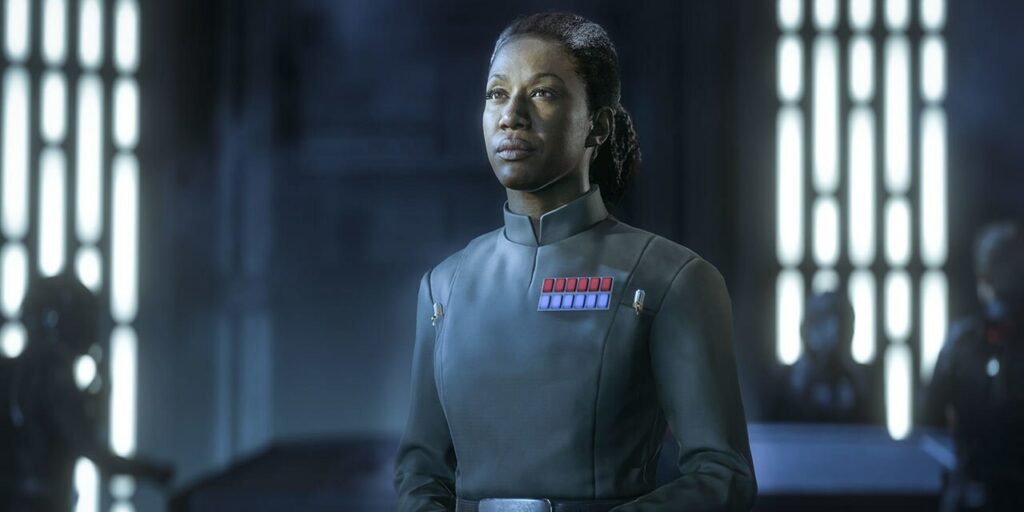
Grand Admiral Rae Sloane
Grand Admiral Rae Sloane is a significant character in the Star Wars universe, known for her formidable presence, strategic acumen, and impactful role within the remnants of the Galactic Empire. As an openly bisexual Black woman, Sloane represents a critical step forward in the diversification of Star Wars characters, offering a multi-dimensional portrayal that resonates with many fans.
Background and Introduction
Rae Sloane was first introduced in John Jackson Miller’s 2014 novel A New Dawn, which serves as a prequel to the Star Wars Rebels animated series. Sloane starts as a captain in the Imperial Navy and quickly rises through the ranks due to her strategic brilliance and unwavering loyalty to the Empire. Her character is known for her intelligence, discipline, and ability to command respect, making her a compelling antagonist and a complex individual within the Star Wars narrative.
Rise Through the Ranks
Sloane’s journey through the ranks of the Empire is marked by her tenacity and strategic genius. Initially introduced as Captain Sloane, she proves her worth in A New Dawn by dealing effectively with insurgents and showcasing her tactical prowess. Her ability to navigate the political and military complexities of the Empire earns her rapid promotions, eventually leading her to the rank of Grand Admiral.
Throughout her career, Sloane is portrayed as a character who believes deeply in the ideals of the Empire, albeit with a more nuanced perspective than some of her contemporaries. She is not driven by a lust for power or cruelty but by a genuine belief in order and stability. This makes her a more relatable and, in some ways, sympathetic character, despite her alignment with the antagonistic force of the Star Wars universe.
Major Appearances and Story Arcs
Rae Sloane’s story is expanded in Chuck Wendig’s Aftermath trilogy, where she plays a pivotal role in the aftermath of the Empire’s fall. Set after the events of Return of the Jedi, the trilogy explores the chaotic period following the deaths of Emperor Palpatine and Darth Vader. Sloane emerges as a key figure attempting to reorganize and stabilize the remnants of the Empire.
In Aftermath, Life Debt, and Empire’s End, Sloane is depicted as a central leader among the Imperial remnants. Her vision for the future of the Empire is less about domination and more about restoring order. She is portrayed as a strategic mastermind, working to unify the scattered Imperial forces and contend with rival factions vying for control.
One of the critical plotlines in the Aftermath series involves Sloane’s interactions with other key characters, including Norra Wexley, a Rebel Alliance operative. Their dynamic is characterized by mutual respect and ideological conflict, adding depth to both characters. In Empire’s End, Sloane’s resolve and leadership are tested as she faces internal betrayal and the overarching threat of the New Republic.
Personal Life and Bisexual Representation
One of the most groundbreaking aspects of Rae Sloane’s character is her openly bisexual identity. This aspect of her character is subtly woven into the narrative, most notably in Wendig’s novels. In Empire’s End, Sloane mentions having never had “a husband or a wife die in my hands,” which acknowledges her non-heterosexual relationships. This inclusion is significant as it normalizes LGBTQ+ identities within the Star Wars universe, presenting them as a natural and integrated part of the character’s life.
Sloane’s bisexuality is not her defining trait but an important part of her identity that adds depth to her character. This portrayal challenges the often tokenistic representation of LGBTQ+ characters in media, offering a more nuanced and realistic depiction. Her relationships, whether romantic or platonic, are depicted with the same complexity and respect as those of any other character.
Mentorship and Influence
Rae Sloane’s influence extends beyond her own narrative arc, impacting other significant characters and storylines within the Star Wars universe. One notable example is her mentorship of Armitage Hux, who appears in the sequel trilogy. Sloane’s guidance and strategic insight play a crucial role in shaping Hux’s rise within the First Order, highlighting her lasting impact on the galaxy’s political and military landscape.
Her role as a mentor also underscores her leadership qualities and her ability to inspire loyalty and respect among her subordinates. Sloane’s interactions with younger officers and her efforts to rebuild the Empire showcase her as a figure of authority and wisdom, capable of seeing the bigger picture and planning for the long-term future of her cause.
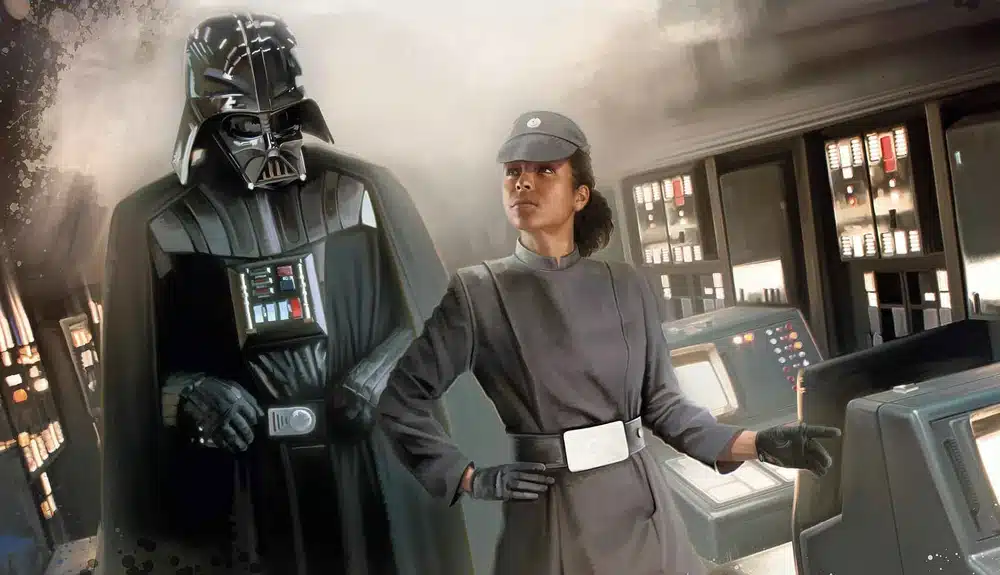
Complex Morality and Leadership
Rae Sloane’s character is distinguished by her complex morality and leadership style. Unlike many Imperial officers who are depicted as purely evil or power-hungry, Sloane is driven by a genuine belief in the necessity of order and stability. She views the Empire as a force for good, capable of bringing peace and prosperity to the galaxy, albeit through authoritarian means.
This perspective sets her apart from other antagonists in the Star Wars universe, making her a more layered and intriguing character. Her actions, while often ruthless, are motivated by a desire to prevent chaos and maintain control. This nuanced portrayal challenges the simplistic good-versus-evil dichotomy and encourages readers to consider the complexities of leadership and governance.
Reception and Legacy
Rae Sloane has been well-received by both fans and critics, praised for her depth, complexity, and the progressive representation she brings to the Star Wars universe. Her character adds a rich layer to the Star Wars narrative, offering a perspective that is both unique and essential to the overall story.
Her presence in the novels and her potential influence on future Star Wars media highlight the importance of diverse representation and the positive impact it can have on storytelling. Sloane’s character serves as a reminder that powerful and compelling stories can be told through diverse lenses, enriching the Star Wars universe for all its fans.
Sloane’s legacy continues to grow as fans and creators alike recognize the significance of her character. Her impact on the Star Wars universe, both in terms of narrative and representation, underscores the franchise’s evolving commitment to diversity and inclusion. As new stories and characters are introduced, the foundation laid by characters like Rae Sloane will undoubtedly continue to shape the future of Star Wars.
Impact on Fans and the LGBTQ+ Community
Positive Reception
The inclusion of queer characters has been met with widespread praise from fans and the LGBTQ+ community. Many have expressed their joy and gratitude for seeing themselves represented in one of the world’s most popular franchises. These characters provide inspiration and comfort, showing that everyone has a place in the Star Wars universe.
Criticism and Challenges
Despite the positive reception, there has also been criticism regarding the extent and visibility of LGBTQ+ representation in Star Wars. Some fans feel that the representation has been too subtle or relegated to minor characters. These criticisms highlight the ongoing need for more prominent and visible queer characters in future Star Wars content.
Broader Implications for Media Representation
The inclusion of LGBTQ+ characters in the Star Wars universe, such as Grand Admiral Rae Sloane, Doctor Chelli Aphra, Terec and Ceret, and others, has significant implications for media representation. This move towards greater inclusivity reflects broader societal changes and the entertainment industry’s evolving understanding of diversity and representation. These changes are not only pivotal for the Star Wars franchise but also set important precedents for media at large.
Historical Context and Evolution
Historically, media representation of LGBTQ+ characters has been sparse, often stereotypical, and marginalized. Early portrayals were frequently characterized by negative stereotypes, invisibility, or tokenism, which contributed to the stigmatization of LGBTQ+ individuals and their experiences. Over time, as societal attitudes toward LGBTQ+ communities have shifted, there has been a growing demand for more accurate and positive representations.
The Star Wars franchise, with its massive global reach and cultural impact, plays a crucial role in this evolution. By integrating diverse characters into its expansive universe, Star Wars helps to normalize LGBTQ+ identities and challenge outdated notions of who can be a hero, villain, or any significant character within a narrative.
Impact on LGBTQ+ Audiences
For LGBTQ+ audiences, seeing characters like Rae Sloane, Terec, and Ceret reflected in a beloved franchise can be profoundly affirming. Representation in media provides validation and visibility, helping individuals to feel seen and understood. It fosters a sense of belonging and can positively influence self-esteem and identity formation.
When LGBTQ+ characters are portrayed with depth and authenticity, it signals to viewers that their experiences and identities are valued and respected. This can be particularly impactful for younger audiences who are in the process of understanding their own identities. Positive representation can offer role models, provide comfort, and inspire confidence, making a significant difference in the lives of LGBTQ+ individuals.
Influence on Broader Audiences
The inclusion of LGBTQ+ characters also has a broad impact on audiences beyond the LGBTQ+ community. It promotes empathy, understanding, and acceptance by exposing viewers to diverse experiences and perspectives. When audiences see well-rounded LGBTQ+ characters, it challenges prejudices and encourages more inclusive attitudes.
Moreover, diverse representation in popular media like Star Wars can help to educate and inform viewers who may not have direct exposure to LGBTQ+ communities. By integrating these characters into mainstream narratives, media can play a vital role in fostering social change and reducing discrimination.
Industry Standards and Future Trends
The steps taken by Star Wars to include LGBTQ+ characters are part of a larger trend within the entertainment industry towards greater inclusivity. Other franchises and media companies are also recognizing the importance of diverse representation and are striving to create more inclusive content. This shift is driven by both social responsibility and the recognition that diverse stories resonate with wider audiences.
As these trends continue, industry standards for representation are likely to evolve. This includes not only the inclusion of LGBTQ+ characters but also ensuring that these portrayals are handled with sensitivity and authenticity. Increasingly, there is an emphasis on involving LGBTQ+ creators, writers, and consultants in the storytelling process to ensure accurate and respectful representation.
Challenges and Criticisms
Despite the positive strides, there are still challenges and criticisms associated with LGBTQ+ representation in media. One common issue is the tendency for some portrayals to be superficial or tokenistic, included more for diversity points rather than genuine storytelling. Such portrayals can come across as pandering and fail to resonate with audiences.
Another challenge is the backlash from certain segments of the audience who may resist these inclusive changes. This resistance can manifest as criticism or even outright hostility towards LGBTQ+ characters and the creators who bring them to life. Navigating these challenges requires a commitment to authenticity and a willingness to stand by the principles of diversity and inclusion.
Economic and Creative Benefits
Inclusive representation also brings economic and creative benefits to the media industry. Diverse stories and characters attract a wider audience base, driving viewership, and sales. This inclusivity can open up new markets and create a more loyal and engaged fanbase.
Creatively, incorporating diverse characters and narratives enriches storytelling. It allows for a broader range of experiences and perspectives to be explored, making stories more dynamic and relatable. This creative diversity can lead to more innovative and compelling content, pushing the boundaries of traditional storytelling.
Star Wars as a Cultural Leader
As a cultural leader, Star Wars has the power to set trends and influence other media franchises. Its commitment to diversity can inspire other creators and producers to follow suit, contributing to a broader cultural shift towards inclusivity. The franchise’s decisions are closely watched and often emulated, making its approach to representation particularly impactful.
By continuing to champion diversity, Star Wars reinforces the idea that everyone, regardless of their gender identity or sexual orientation, can find a place in the galaxy far, far away. This message of inclusivity aligns with the franchise’s overarching themes of hope, unity, and resistance against oppression, further cementing its relevance and appeal.
Educational Opportunities
The representation of LGBTQ+ characters in Star Wars also presents educational opportunities. Educators and parents can use these characters as entry points to discuss topics related to diversity, inclusion, and acceptance with younger audiences. Storylines involving LGBTQ+ characters can help to introduce these concepts in an accessible and engaging way, fostering understanding and empathy from an early age.
Additionally, fan communities and social media platforms provide spaces for discussions about representation and its importance. These conversations can deepen fans’ understanding of diversity issues and promote a more inclusive fan culture. The educational impact extends beyond the screen, influencing real-world attitudes and behaviors.
The Role of Fan Advocacy
Fan advocacy has played a significant role in pushing for better representation in Star Wars. The passionate and vocal fanbase has continuously called for more diversity, demonstrating the power of collective voices in shaping the media landscape.
The Future of LGBTQ+ Representation in Star Wars
Upcoming Projects
With several new Star Wars projects on the horizon, including films, TV series, and books, there is potential for even greater LGBTQ+ representation. Creators have the opportunity to introduce new queer characters and further develop existing ones, ensuring that the Star Wars universe continues to reflect the diversity of its audience.
Continued Commitment from Lucasfilm
Lucasfilm, the production company behind Star Wars, has shown a commitment to diversity and inclusion. This commitment suggests that future content will continue to prioritize representation, creating a more inclusive and welcoming galaxy for all fans.
FAQs
Who was the first canonically LGBTQ+ character in Star Wars? Delian Mors, introduced in Paul S. Kemp’s 2015 novel Lords of the Sith, was the first LGBTQ+ character in the official Star Wars canon.
What role does Sinjir Rath Velus play in Star Wars? Sinjir Rath Velus, a former Imperial officer and the first major gay hero in Star Wars, appears in Chuck Wendig’s Aftermath trilogy.
Who is Doctor Chelli Aphra in the Star Wars universe? Doctor Chelli Aphra is a rogue archaeologist featured in Marvel’s Star Wars comics. She is notable for her complex relationships and was the first to have a visible LGBTQ+ kiss in the Disney Star Wars canon.
What is significant about Terec and Ceret? Terec and Ceret, introduced in The High Republic series, are the first trans non-binary Jedi in Star Wars, representing a significant step forward in non-binary and trans representation.
What makes Rae Sloane a notable character in Star Wars? Rae Sloane, a Black, bisexual woman, is a formidable Grand Admiral in the Empire and a symbol of diverse representation in the Star Wars novels.
How has fan advocacy influenced LGBTQ+ representation in Star Wars? Fan advocacy has played a crucial role in pushing for better representation, demonstrating the power of collective voices in shaping media.
Conclusion
The rise of queer characters in the Star Wars universe is a significant step towards greater inclusivity and representation in mainstream media. As the franchise continues to evolve, the inclusion of diverse characters ensures that all fans feel seen and valued. The positive impact on the LGBTQ+ community and the broader implications for media representation highlight the importance of these efforts. With a continued commitment to diversity from Lucasfilm and ongoing support from fans, the future of Star Wars looks brighter and more inclusive than ever.


